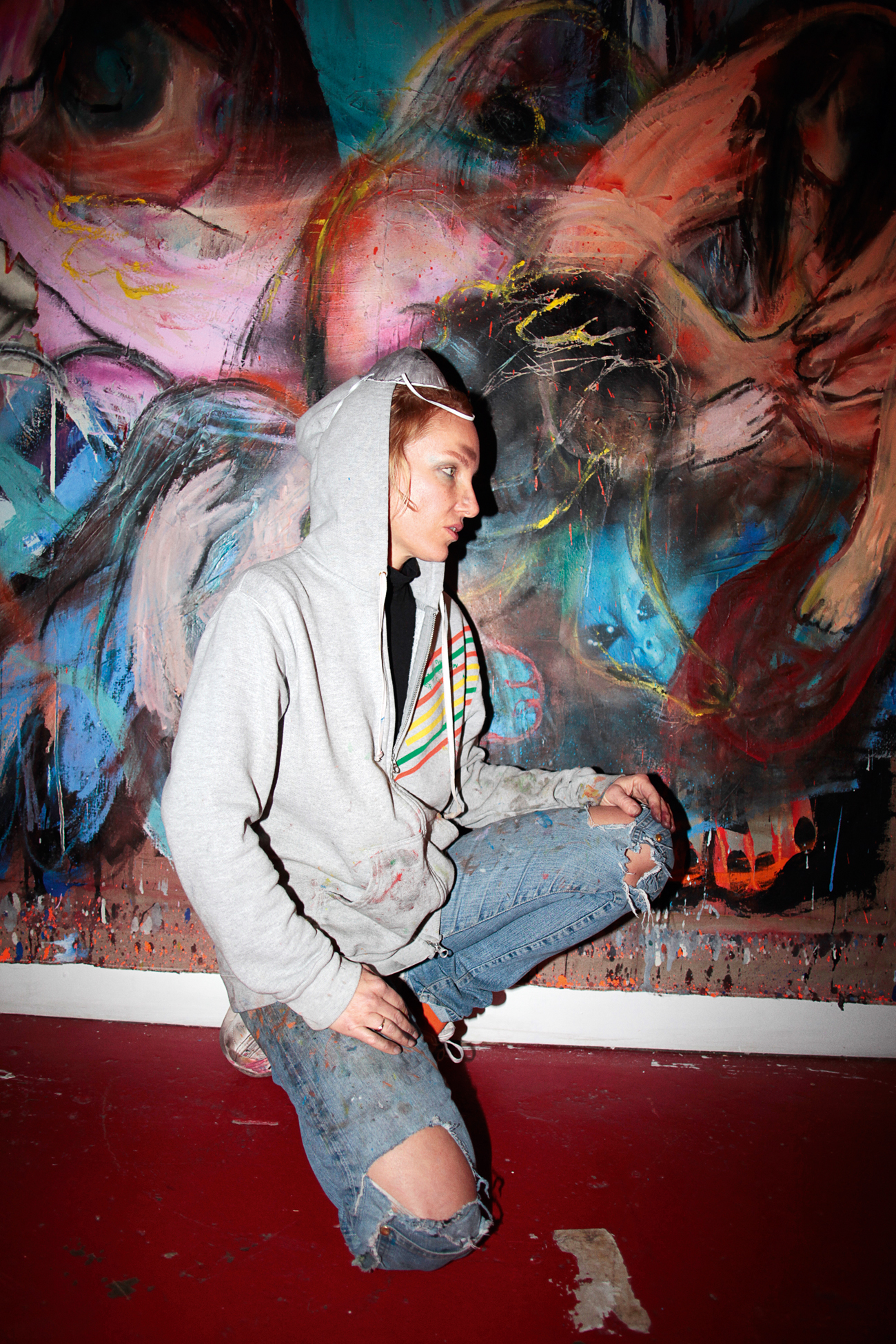Purple Magazine
— S/S 2010 issue 13
Rita Ackermann
 Portrait by Olivier Zahm
Portrait by Olivier Zahm
interview and portrait by OLIVIER ZAHM
RITA ACKERMANN is surely one of the most inspired artists and free spirits of the New York art world. I first met her almost 20 years ago, shortly after she arrived in the US from Hungary. Rita decided to stay and work in New York City, and it was in this world of excessive drug-taking, fast sex, and perverse commerce that she became known for her drawings and collages of an innocent young girl, perhaps a surrogate of her own pure soul. Rita quickly became an iconic figure of the glory years of the ’90s downtown New York scene, a kindred spirit of Sonic Youth, Harmony Korine, Chloë Sevigny, Bernadette Corporation, and Richard Kern. But she never sold out for fame. Now she’s full of new energy, gathering new people around her — EXPERIMENTING WITH…